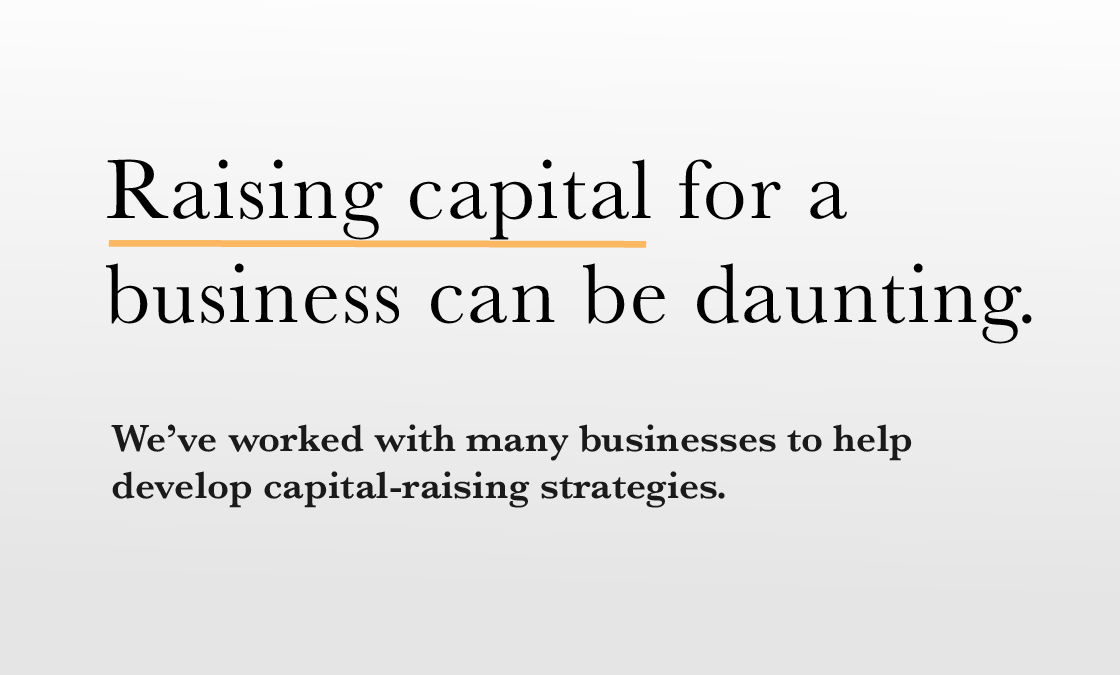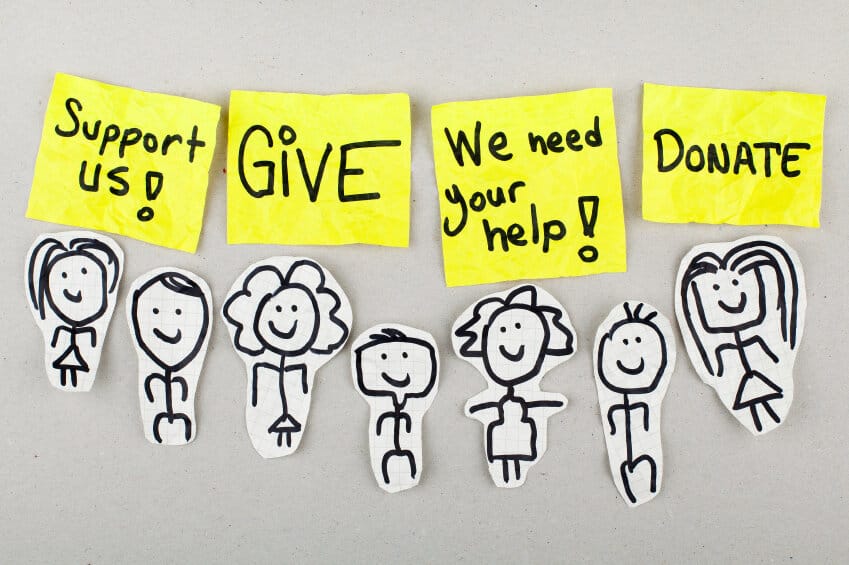Crowdfunding can look like the entrepreneur’s dream. New technologies find development funds; great artists find patrons; developers can finance game development; and Good Samaritans leverage the power of micro funding to aid those in need – all for the price of some small token of appreciation. What could possibly go wrong?
In the real world, the answer is lots. Great concepts can fall apart on execution. Innocent campaign creators can find themselves owing massive amounts of money back to angry backers, facing civil suits and the possibility of criminal prosecution. Fraudsters disappear.
Funders may simply be out of pocket, with nothing to show for the $50 or $100. The crowdfunding platform that collected commissions, though? As the saying goes in gambling, the house always wins.
Crowdfunding Campaigns Understood
The term “crowdfunding” can be used to describe a wide variety of more or less speculative economic arrangements. “Equity crowdfunding,” in which an entrepreneur promises an ownership interest in a developing business in exchange for financial support, still exists only in the rarified world of accredited investors. “Crowdsourcing,” often describes a method of delegating tasks or generating content by tapping into the power of the crowd. Wikipedia is the classic example.
Non-equity crowdfunding is what platforms such as Kickstarter or Indiegogo or GoFundMe do. They each have a different focus, so some may be better platforms than others to fund your non-bigoted restaurant’s offer to deliver sausage sandwiches to gay weddings, for example.
Nonetheless, they all have the same basic scheme. The campaigner sets a basic financial goal and individuals contribute funds toward that goal, sometimes with no expectation of anything and sometimes with the understanding that they will receive something like a tee-shirt bearing the likeness of Ruth Bader Ginsburg or an early version of a video game. The problems begin when the heartfelt token of appreciation, reward or perk, fails to materialize.
The Campaigner’s Risk
If it works well, things could be very good. The project succeeds, and the business or cause is underway. You do well; your funders get a souvenir of the adventure and become loyal customers. Everyone is happy.
But for the entrepreneur, the potential for success and the risk of failure are closely linked. What if things don’t go as planned? Let’s suppose the project was ill-conceived or unlucky and falls apart.
If the creator of the campaign on Kickstarter or Indiegogo is unable to complete the project and fulfill rewards, he or she must:
- communicate with backers, post updates that explain what work has been done, how funds were used, and what prevents them from finishing the project as planned,
- attempt to complete the project, and perhaps most importantly,
- offer to return any remaining funds to backers who have not received their incentive gifts or rewards (in proportion to the amounts pledged).
More Sobering News
The risk of having to give the money back is only one of several different kinds of economic exposure that creators face.
- Entrepreneurs, unprotected by the kind of nondisclosure agreements common in more sophisticated financing relationships, may discover that the great idea has been stolen and produced by an erstwhile backer.
- Manufacturers of goods, aware of the amount raised in a crowdfunding campaign, may use that information as leverage in contract negotiations.
- Remember that funds raised may be taxable income. This may be fine if the venture was a huge economic success, less so, if it flopped or you gave the money to a needy friend.
- Backers who are unhappy enough to sue over the loss of a relatively small amount of money may be a risk to creators’ personal assets. In a recent Washington state case, the state’s Attorney General also brought a consumer protection lawsuit on behalf of defrauded funders.
- The failure of a crowdfunding campaign is a very public event, and may make it difficult for a creator to find projects, employment or financing in the future.
And, of course, thieves damage the reputation of all honest, if hapless, crowdfund seekers.
The Funder’s Exposure
The funder’s risk is ultimately limited to the size of the investment. Smaller investment equals smaller potential gain, perhaps no more than a warm altruistic glow. But it also makes for a smaller possible loss. On one hand, the game or gadget offered as a reward may be less than awesome. On the other, it may never arrive at all.
Many funders are prepared to lose a small amount of money because of a creator’s unforeseen difficulties. The suspicion of being scammed, on the other hand, causes rage. And rage is expensive, in the litigious sense of things. It is also likely to be futile.
For the backer, there is very little recourse. The honest but unsuccessful venturer likely has few personal or business assets. The dishonest one has probably disappeared with the money. The crowdfunding platform that acted as matchmaker is likely off the contractual hook under well-lawyered service agreements.
The Crowdfunding Platform’s Exposure
In the wake of recent litigation, many crowdfunding platforms have amended their terms of service to explicitly disclaim any liability arising from a dispute between the creator of the campaign and the backer. In its “Terms of Use,” Kickstarter, for example, specifies that:
Kickstarter provides a funding platform for creative projects. When a creator posts a project on Kickstarter, they’re inviting other people to form a contract with them. Anyone who backs a project is accepting the creator’s offer, and forming that contract.
Kickstarter is not a part of this contract — the contract is a direct legal agreement between creators and their backers.
Further, under the section entitled, “Stuff We Don’t Do and Aren’t Responsible For,” the site continues,
We don’t oversee projects’ performance, and we don’t mediate disputes between users.
Kickstarter isn’t liable for any damages or losses related to your use of the Services. We don’t become involved in disputes between users, or between users and any third party relating to the use of the Services. We don’t oversee the performance or punctuality of projects, and we don’t endorse any content users submit to the Site. When you use the Services, you release Kickstarter from claims, damages, and demands of every kind — known or unknown, suspected or unsuspected, disclosed or undisclosed — arising out of or in any way related to such disputes and the Services. All content you access through the Services is at your own risk. You’re solely responsible for any resulting damage or loss to any party.
Kickstarter further disclaims any warranties, requires that users indemnify it for any claims against Kickstarter, limits its own liability to $100 and requires that disputes will be governed by New York law.
Indiegogo, like Kickstarter, makes clear that it is a passive venue, not a store, and that “perks” are not offered for sale. Further, it makes clear that,
Indiegogo is under no obligation to become involved in disputes between Campaign Owners and Contributors, or Users and any third party.
Its Waiver and Release clause specifically incorporates the provisions of California Civil Code Section 1542 that relate to the waiver of unknown claims. Indiegogo requires that disputes be resolved through arbitration and, like Kickstarter, it limits its liability to $100.
Who Wins?
The crowdfunding platform gets paid, of course, generally collecting from the campaign creator rather than the donor. Kickstarter collects 5 percent of the funds collected for projects that meet their goal. Indiegogo charges a 9 percent fee on the funds raised and refunds 5 percent when the goal is reached, for an overall fee of 4 percent. GoFundMe similarly charges campaigners 5 percent with an additional 2.9 percent going to the payment processor.
For everyone else involved, “winning” may be a matter of adjusting expectations. Donors need to come to grips the fact that they are not buying a product, but investing in a campaign that may succeed or may fail in a variety of spectacular ways.
Campaign creators need to appreciate that, despite the enormous amount of money raised through crowdfunding (Kickstarter cites $1.5 billion in pledges since 2009), the failure rate is greater than half.
Crowdfunding is full of intriguing potential, including the chance to build a market for a product or service while getting the basic concept off the ground. But the campaigns, by definition, are designed for novices. It’s part of the fresh, “gee-whiz” charm of micro funding. Neither backers nor creators should expect the security of some more sophisticated bigger ticket business funding avenues.


![Will Crowdfunding and General Solicitation Change How Companies Raise Capital? [e298]](https://www.pashalaw.com/wp-content/uploads/2018/11/Will-Crowdfunding-and-General-Solicitation-Change-How-Companies-Raise-Capital-1024x543.jpg)

![The Legalities Behind Running a Kickstarter Campaign [e177]](https://www.pashalaw.com/wp-content/uploads/2015/04/The-Legalities-Behind-Running-a-Kickstarter-Campaign-1024x507.png)
![SEC Compliance Issues for International Crowdfunding Site [e129] SEC Compliance Issues for International Crowdfunding Site](https://www.pashalaw.com/wp-content/uploads/2014/12/SEC-Compliance-Issues-for-International-Crowdfunding-Site1-e1418311428401.jpg)





![Law in the Digital Age: Exploring the Legal Intricacies of Artificial Intelligence [e323]](https://www.pashalaw.com/wp-content/uploads/2023/11/WhatsApp-Image-2023-11-21-at-13.24.49_4a326c9e-300x212.jpg)
![Unraveling the Workforce: Navigating the Aftermath of Mass Layoffs [e322]](https://www.pashalaw.com/wp-content/uploads/2023/07/Untitled-design-23-300x212.png)
![Return to the Office vs. Remote: What Can Employers Legally Enforce? [e321]](https://www.pashalaw.com/wp-content/uploads/2023/01/Pasha_LSSB_321_banner-300x212.jpg)
![Explaining the Hans Niemann Chess Lawsuit v. Magnus Carlsen [e320]](https://www.pashalaw.com/wp-content/uploads/2022/10/LAWYER-EXPLAINS-7-300x169.png)
![California v. Texas: Which is Better for Business? [313]](https://www.pashalaw.com/wp-content/uploads/2021/07/Pasha_LSSB_CaliforniaVSTexas-300x212.jpg)
![Buyers vs. Sellers: Negotiating Mergers & Acquisitions [e319]](https://www.pashalaw.com/wp-content/uploads/2022/06/Pasha_LSSB_BuyersVsSellers_banner-300x212.jpg)
![Employers vs. Employees: When Are Employment Restrictions Fair? [e318]](https://www.pashalaw.com/wp-content/uploads/2022/05/Pasha_LSSB_EmployeesVsEmployers_banner-1-300x212.jpg)
![Vaccine Mandates Supreme Court Rulings [E317]](https://www.pashalaw.com/wp-content/uploads/2022/02/WhatsApp-Image-2022-02-11-at-4.10.32-PM-300x212.jpeg)
![Business of Healthcare [e316]](https://www.pashalaw.com/wp-content/uploads/2021/11/Pasha_LSSB_BusinessofHealthcare_banner-300x212.jpg)
![Social Media and the Law [e315]](https://www.pashalaw.com/wp-content/uploads/2021/10/WhatsApp-Image-2021-10-06-at-1.43.08-PM-300x212.jpeg)
![Defining NDA Boundaries: When does it go too far? [e314]](https://www.pashalaw.com/wp-content/uploads/2021/09/Pasha_LSSB_NDA_WordPress-2-300x212.jpg)
![More Than a Mistake: Business Blunders to Avoid [312] Top Five Business Blunders](https://www.pashalaw.com/wp-content/uploads/2021/06/Pasha_LSSB_Blunders_WP-1-300x212.jpg)
![Is There a Right Way to Fire an Employee? We Ask the Experts [311]](https://www.pashalaw.com/wp-content/uploads/2021/02/Pasha_LSSB_FireAnEmployee_Website-300x200.jpg)
![The New Frontier: Navigating Business Law During a Pandemic [310]](https://www.pashalaw.com/wp-content/uploads/2020/12/Pasha_LSSB_Epidsode308_Covid_Web-1-300x200.jpg)
![Wrap Up | Behind the Buy [8/8] [309]](https://www.pashalaw.com/wp-content/uploads/2020/11/Pasha_BehindTheBuy_Episode8-300x200.jpg)
![Is it all over? | Behind the Buy [7/8] [308]](https://www.pashalaw.com/wp-content/uploads/2020/09/iStock-1153248856-overlay-scaled-300x200.jpg)
![Fight for Your [Trademark] Rights | Behind the Buy [6/8] [307]](https://www.pashalaw.com/wp-content/uploads/2020/07/Fight-for-your-trademark-right-300x200.jpg)
![They Let It Slip | Behind the Buy [5/8] [306]](https://www.pashalaw.com/wp-content/uploads/2020/06/Behind-the-buy-they-let-it-slip-300x200.jpg)
![Mo’ Investigation Mo’ Problems | Behind the Buy [4/8] [305]](https://www.pashalaw.com/wp-content/uploads/2020/05/interrobang-1-scaled-300x200.jpg)
![Broker or Joker | Behind the Buy [3/8] [304] Behind the buy - Broker or Joker](https://www.pashalaw.com/wp-content/uploads/2020/04/Joker-or-Broker-1-300x185.jpg)
![Intentions Are Nothing Without a Signature | Behind the Buy [2/8] [303]](https://www.pashalaw.com/wp-content/uploads/2020/04/intentions-are-nothing-without-a-signature-300x185.jpg)
![From First Steps to Final Signatures | Behind the Buy [1/8] [302]](https://www.pashalaw.com/wp-content/uploads/2020/04/first-steps-to-final-signatures-300x185.jpg)
![The Dark-side of GrubHub’s (and others’) Relationship with Restaurants [e301]](https://www.pashalaw.com/wp-content/uploads/2015/04/When-Competition-Goes-Too-Far-Ice-Cream-Truck-Edition-300x201.jpg)
![Ultimate Legal Breakdown of Internet Law & the Subscription Business Model [e300]](https://www.pashalaw.com/wp-content/uploads/2019/05/Ultimate-Legal-Breakdown-of-Internet-Law-the-Subscription-Business-Model-300x196.jpg)
![Why the Business Buying Process is Like a Wedding?: A Legal Guide [e299]](https://www.pashalaw.com/wp-content/uploads/2019/03/futura-300x169.jpg)
![Will Crowdfunding and General Solicitation Change How Companies Raise Capital? [e298]](https://www.pashalaw.com/wp-content/uploads/2018/11/Will-Crowdfunding-and-General-Solicitation-Change-How-Companies-Raise-Capital-300x159.jpg)
![Pirates, Pilots, and Passwords: Flight Sim Labs Navigates Legal Issues (w/ Marc Hoag as Guest) [e297]](https://www.pashalaw.com/wp-content/uploads/2018/07/flight-sim-labs-300x159.jpg)
![Facebook, Zuckerberg, and the Data Privacy Dilemma [e296] User data, data breach photo by Pete Souza)](https://www.pashalaw.com/wp-content/uploads/2018/04/data-300x159.jpg)
![What To Do When Your Business Is Raided By ICE [e295] I.C.E Raids business](https://www.pashalaw.com/wp-content/uploads/2018/02/ice-cover-300x159.jpg)
![General Contractors & Subcontractors in California – What you need to know [e294]](https://www.pashalaw.com/wp-content/uploads/2018/01/iStock-666960952-300x200.jpg)
![Mattress Giants v. Sleepoplis: The War On Getting You To Bed [e293]](https://www.pashalaw.com/wp-content/uploads/2017/12/sleepopolis-300x159.jpg)
![The Harassment Watershed [e292]](https://www.pashalaw.com/wp-content/uploads/2017/12/me-2-300x219.jpg)
![Investing and Immigrating to the United States: The EB-5 Green Card [e291]](https://www.pashalaw.com/wp-content/uploads/2012/12/eb-5-investment-visa-program-300x159.jpg)
![Responding to a Government Requests (Inquiries, Warrants, etc.) [e290] How to respond to government requests, inquiries, warrants and investigation](https://www.pashalaw.com/wp-content/uploads/2017/10/iStock_57303576_LARGE-300x200.jpg)
![Ultimate Legal Breakdown: Employee Dress Codes [e289]](https://www.pashalaw.com/wp-content/uploads/2017/08/Ultimate-Legal-Breakdown-Template-1-300x159.jpg)
![Ultimate Legal Breakdown: Negative Online Reviews [e288]](https://www.pashalaw.com/wp-content/uploads/2017/06/Ultimate-Legal-Breakdown-Online-Reviews-1-300x159.jpg)
![Ultimate Legal Breakdown: Social Media Marketing [e287]](https://www.pashalaw.com/wp-content/uploads/2017/06/ultimate-legal-breakdown-social-media-marketing-blur-300x159.jpg)
![Ultimate Legal Breakdown: Subscription Box Businesses [e286]](https://www.pashalaw.com/wp-content/uploads/2017/03/ultimate-legal-breakdown-subscription-box-services-pasha-law-2-300x159.jpg)
![Can Companies Protect Against Foreseeable Misuse of Apps [e285]](https://www.pashalaw.com/wp-content/uploads/2017/01/iStock-505291242-300x176.jpg)
![When Using Celebrity Deaths for Brand Promotion Crosses the Line [e284]](https://www.pashalaw.com/wp-content/uploads/2017/01/celbrity-300x159.png)
![Are Employers Liable When Employees Are Accused of Racism? [e283] Racist Employee](https://www.pashalaw.com/wp-content/uploads/2016/12/Are-employers-liable-when-an-employees-are-accused-of-racism-300x159.jpg)
![How Businesses Should Handle Unpaid Bills from Clients [e282] What to do when a client won't pay.](https://www.pashalaw.com/wp-content/uploads/2016/12/How-Businesses-Should-Handle-Unpaid-Bills-to-Clients-300x159.png)
![Can Employers Implement English Only Policies Without Discriminating? [e281]](https://www.pashalaw.com/wp-content/uploads/2016/11/Can-Employers-Impliment-English-Only-Policies-Without-Discriminating-300x159.jpg)
![Why You May No Longer See Actors’ Ages on Their IMDB Page [e280]](https://www.pashalaw.com/wp-content/uploads/2016/10/IMDB-AGE2-300x159.jpg)
![Airbnb’s Discrimination Problem and How Businesses Can Relate [e279]](https://www.pashalaw.com/wp-content/uploads/2016/09/airbnb-300x159.jpg)
![What To Do When Your Amazon Account Gets Suspended [e278]](https://www.pashalaw.com/wp-content/uploads/2016/09/What-To-Do-When-Your-Amazon-Account-Gets-Suspended-1-300x200.jpg)
![How Independent Artists Reacted to Fashion Mogul Zara’s Alleged Infringement [e277]](https://www.pashalaw.com/wp-content/uploads/2016/08/How-Independent-Artists-Reacted-to-Fashion-Mogul-Zaras-Alleged-Infringement--300x159.jpg)
![Can Brave’s Ad Replacing Software Defeat Newspapers and Copyright Law? [e276]](https://www.pashalaw.com/wp-content/uploads/2016/08/Can-Braves-Ad-Replacing-Software-Defeat-Newspapers-and-Copyright-Law-300x159.jpg)
![Why The Roger Ailes Sexual Harassment Lawsuit Is Far From Normal [e275]](https://www.pashalaw.com/wp-content/uploads/2016/07/WHY-THE-ROGER-AILES-SEXUAL-HARASSMENT-LAWSUIT-IS-FAR-FROM-NORMAL-300x159.jpeg)
![How Starbucks Turned Coveted Employer to Employee Complaints [e274]](https://www.pashalaw.com/wp-content/uploads/2016/07/iStock_54169990_LARGE-300x210.jpg)
